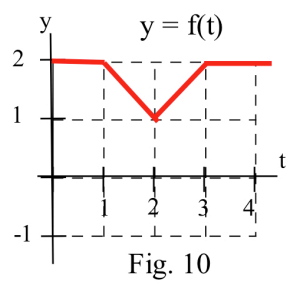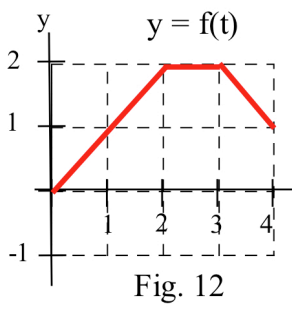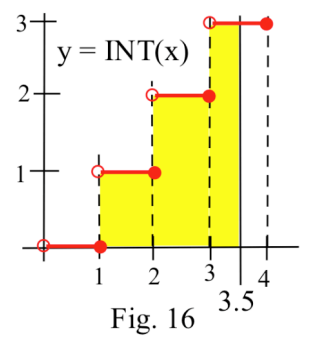Practice Problems
| Site: | Saylor Academy |
| Course: | MA005: Calculus I |
| Book: | Practice Problems |
| Printed by: | Guest user |
| Date: | Tuesday, October 22, 2024, 4:44 AM |
Description
Work through the odd-numbered problems 1-67. Once you have completed the problem set, check your answers.
Practice Problems
(a) Use part 2 of the Fundamental Theorem to find a formula for and
then differentiate
to obtain a formula for
. Evaluate
at
and
.
(b) Use part 1 of the Fundamental Theorem to evaluate at
and
.
In problems 3 – 7 , evaluate at
and
.
In problems 9 – 11 for the functions in Figures 10 – 14. Evaluate
.


In problems 13 – 33, verify that is an antiderivative of the integrand
and use Part 2 of the Fundamental Theorem to evaluate the definite integrals.
For problems 33 – 47, find an antiderivative of the integrand and use Part 2 of the Fundamental Theorem to evaluate the definite integral.
In problems 49 – 53 , find the area of each shaded region.
49. Region in Fig. 14

51. Region in Fig. 16.

53. Region in Fig. 18.

Leibniz' Rule
Source: Dale Hoffman, https://learn.saylor.org/pluginfile.php/1403575/mod_resource/content/2/CC_4_5_FundamentalThm.pdf This work is licensed under a Creative Commons Attribution 3.0 License.
This work is licensed under a Creative Commons Attribution 3.0 License.